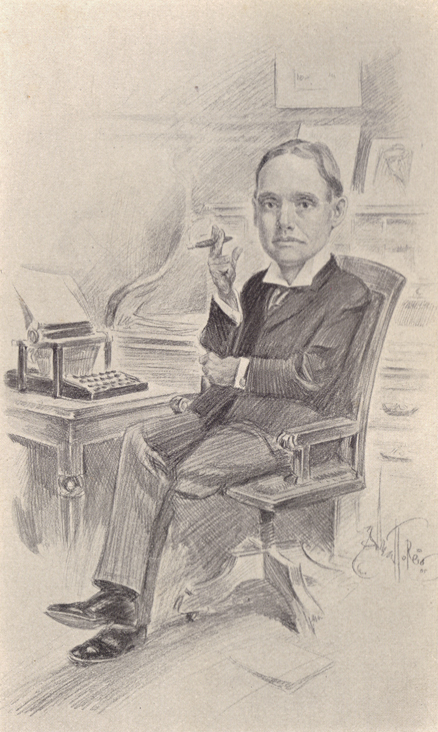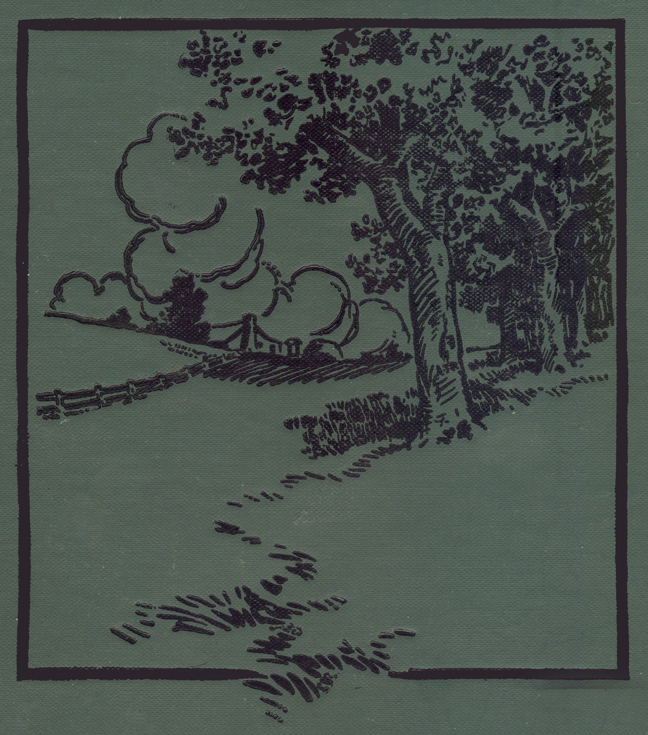
From At the Grass Roots, Comprising “The Christmas of 1883,” and Other Vagrant Sketches, by Elmer House (Dodd Gaston), with Cover Design and Frontispiece by Albert T. Reid, Topeka: Monotyped by Crane & Company, 1905; pp. 97-100.

Of all the folk in Grigsby’s Station I liked the Judge best. There may have been a time when the Judge was only an “Hon.” or plain “Mister,” but he has been on the bench so long that I can not remember it. In a place like Grigsby’s Station whenever a man begins to get his head above the level of his neighbors one hears stories “on” him. It is told about that he got his property by cheating, that he is mean to his family, or that he is stingy and dries a hard bargain. Sometimes, if he is particularly prosperous or prominent, they tell “woman” stories on him, although in a small town like Grigsby’s Station very little of that sort of thing goes on. But, although I have known the Judge ever since I can remember, I never heard him spoken of unkindly or disrespectfully.
98 I have always thought that had the Judge pulled himself out of the rut of the small country town and gone to a more considerable community he would have been recognized as a very great man. He is certainly learned in the law and he has the soul of a poet and the eye and understanding of an artist. But he stuck to the little white house with the green shutters, and for more than twenty years has sat in the dusty, dingy courtroom in a splint-bottomed chair and behind a worn desk the top of which is covered with oilcloth of the sort careful housewives lay upon their kitchen floors.
The only time the Judge ever criticised me was upon an occasion when I appeared in Grigsby’s Station wearing a fancy vest very delicate in texture and very light in color. “I hate to see a man wearing a thing like that,” he said when I met him in front of the postoffice. So I went home and buried the offending garment in the bottom of my suit-case. Sartorially, 99 the Judge has always been the despair of his wife and daughters. His only condescension to style is a collar and tie worn upon occasions when he happens to be holding court or attending a soldiers’ reunion.
Once the Judge set out by rail from Grigsby’s Station to Birmington, a neighboring town. A new conductor happened to be on the “run” that day, and he promptly took up the Judge’s pass and collected full fare. “That damn tramp back there,” he remarked to the brakeman as he went forward, “was a-tryin’ to ride on Judge Lee’s pass.” On another occasion the Judge’s trouser had reached the stage where further patching was impossible. So Mrs. Judge thrust the price into his hand and bade him go uptown and buy a new pair. The Judge set off obediently enough. He came back in an hour or two with a bundle under his arm, and unwrapping it with that pleasurable pride which always 100 precedes the springing of a surprise, displayed two new books.
I have said that had the Judge gone to any considerable community he would have been recognized as a very great man. But perhaps, after all, he chose wisely. In the little house with the green shutters every picture and every decoration is an association and every book an old familiar friend. About the house there is the green grass and the trees. Away to the west there is the river, and there are the tints in the sky-line to be watched and the drowsy hum of the country town to lull one to rest and quiet.
And so the Judge’s life has run on like a gently flowing river between green banks and under blue skies. He has peace and quiet and every neighbor is his friend. The other life, the life he might have led had he chosen, has its greater victories, but it also carries its scars. Perhaps the Judge chose wisely, after all.
